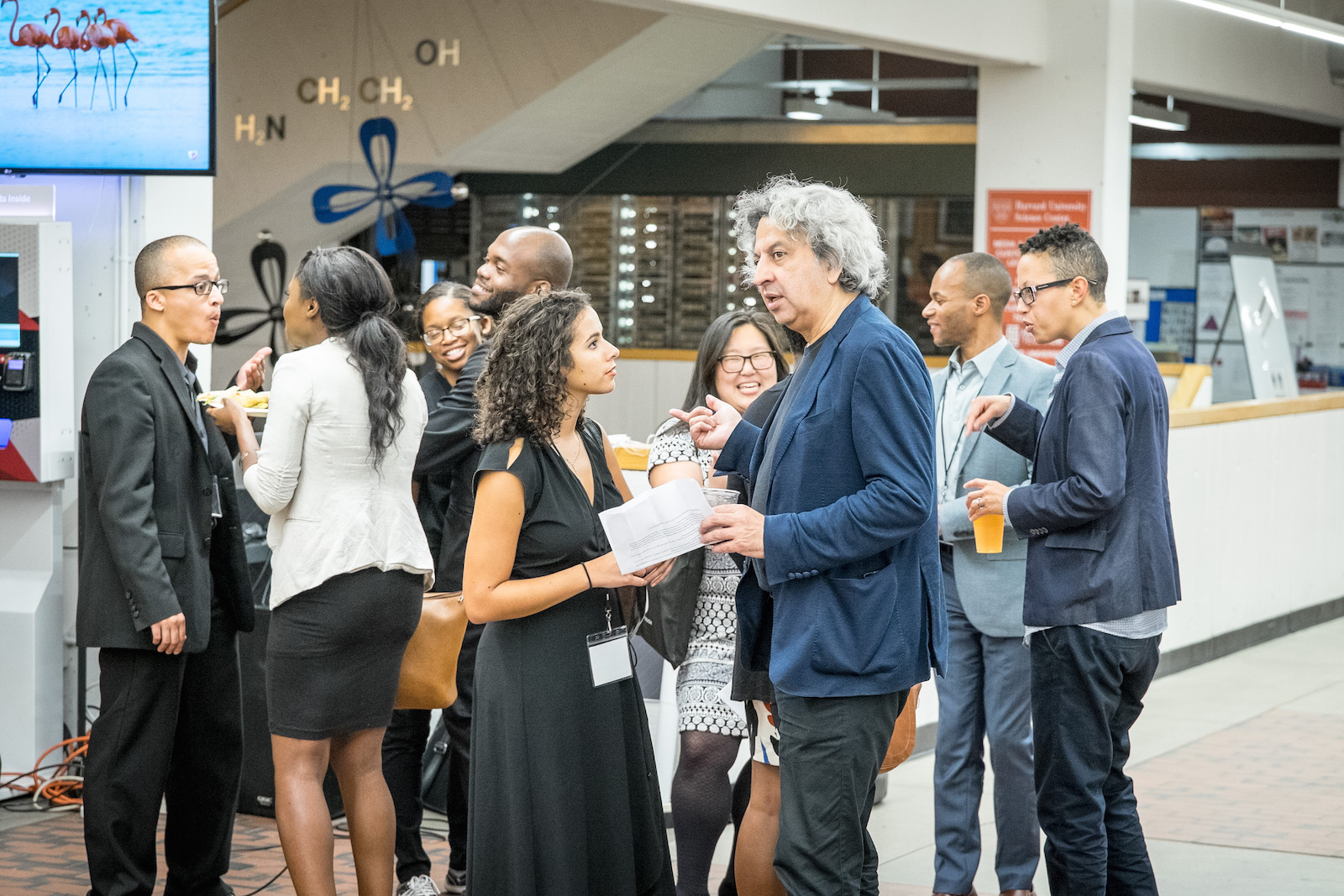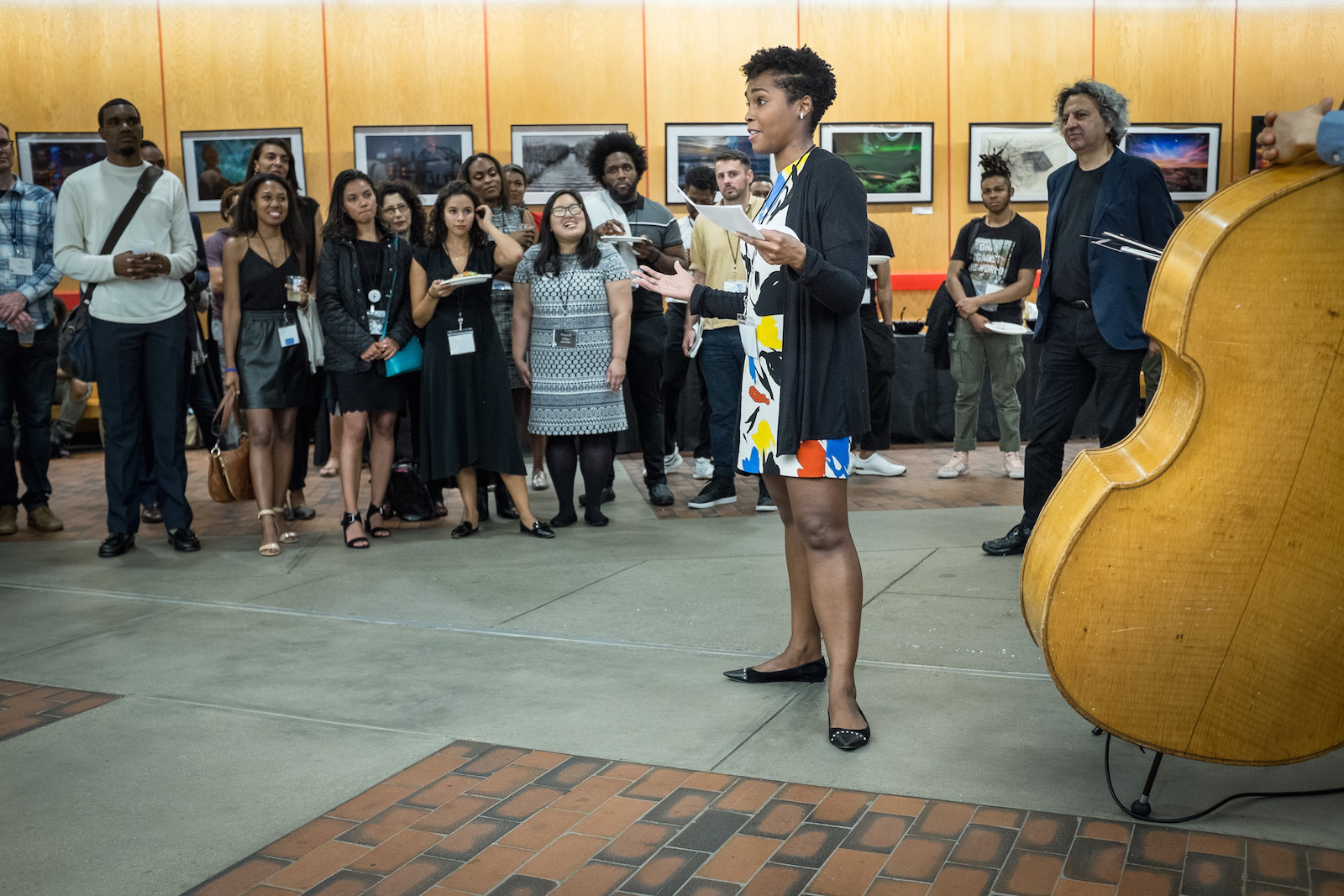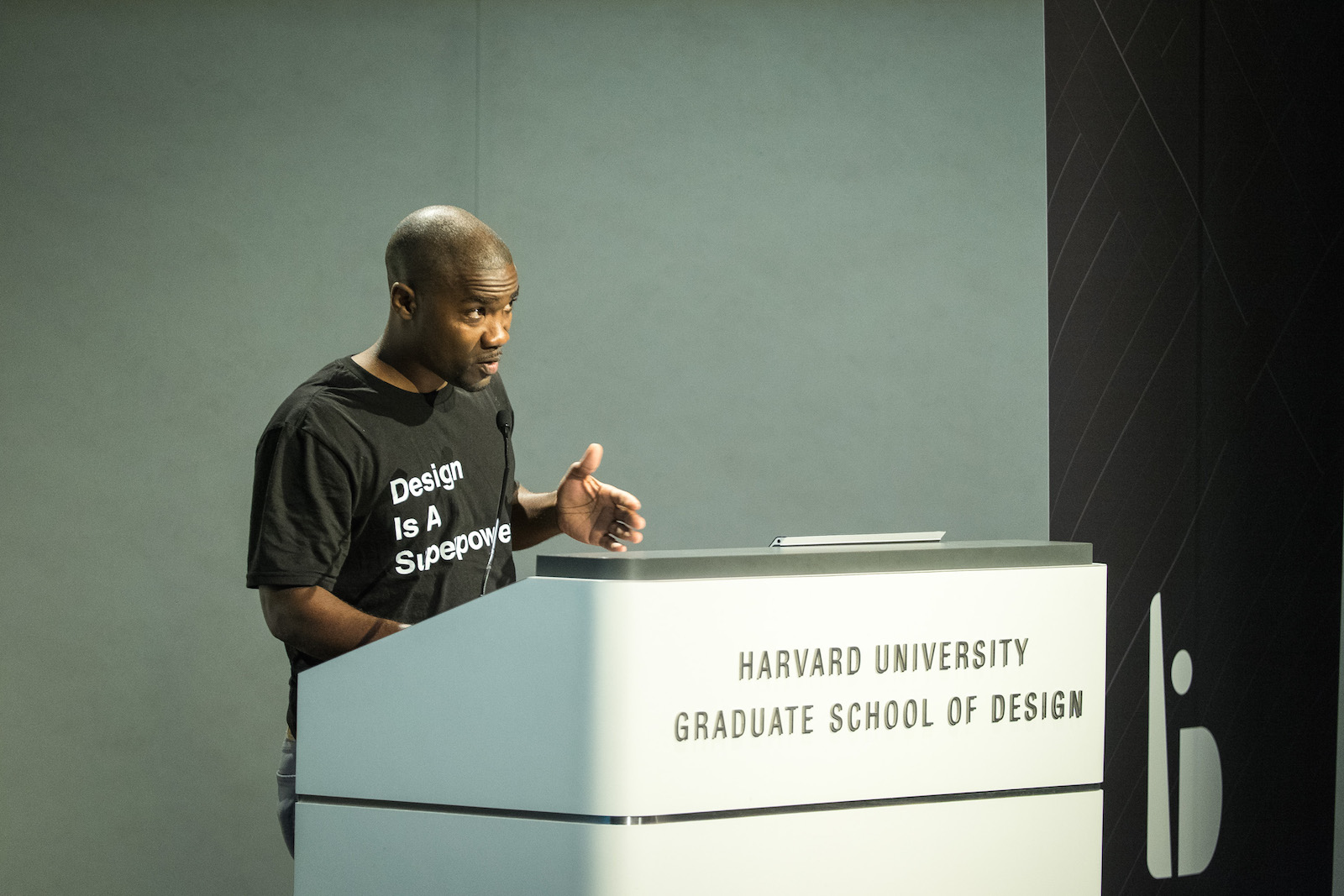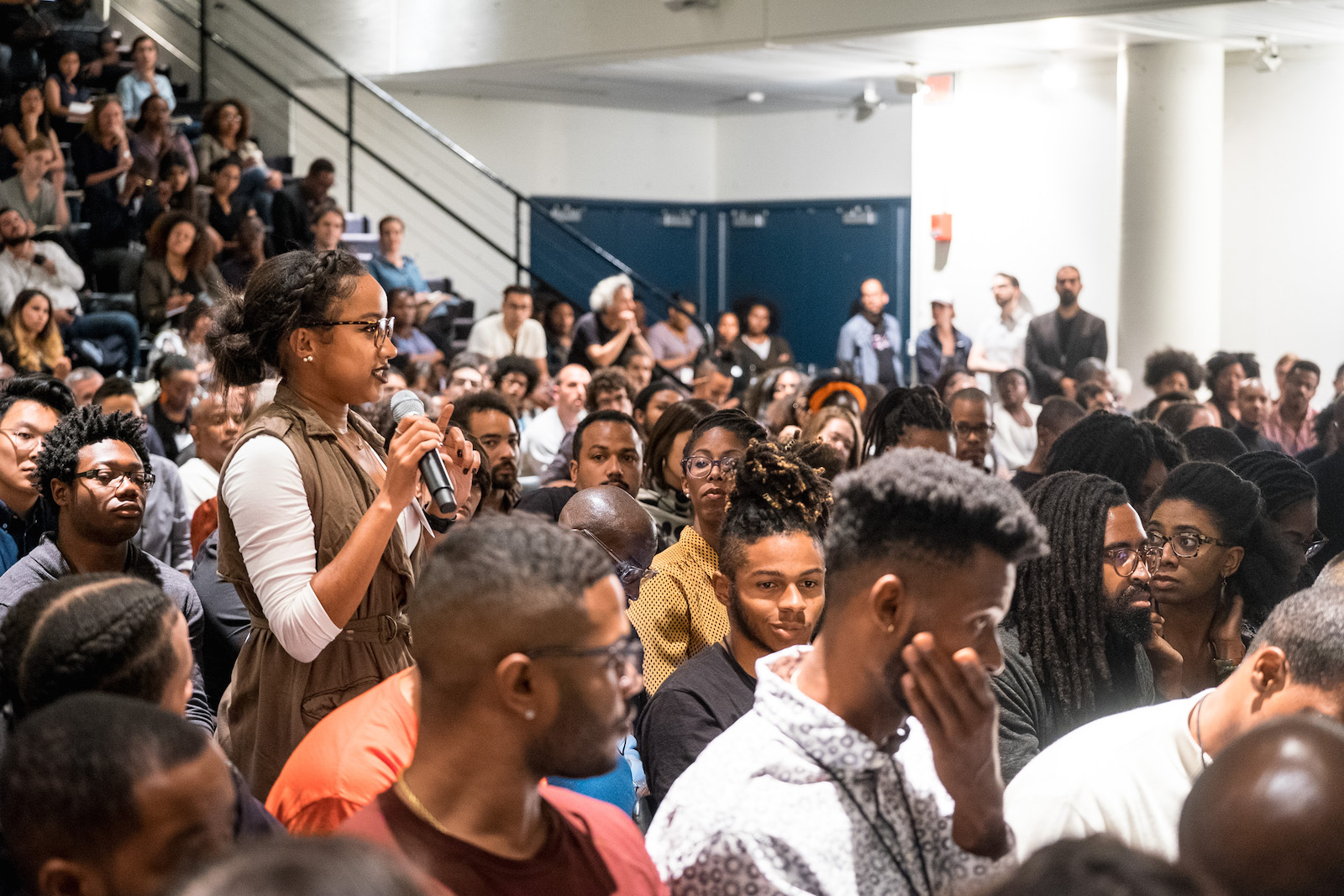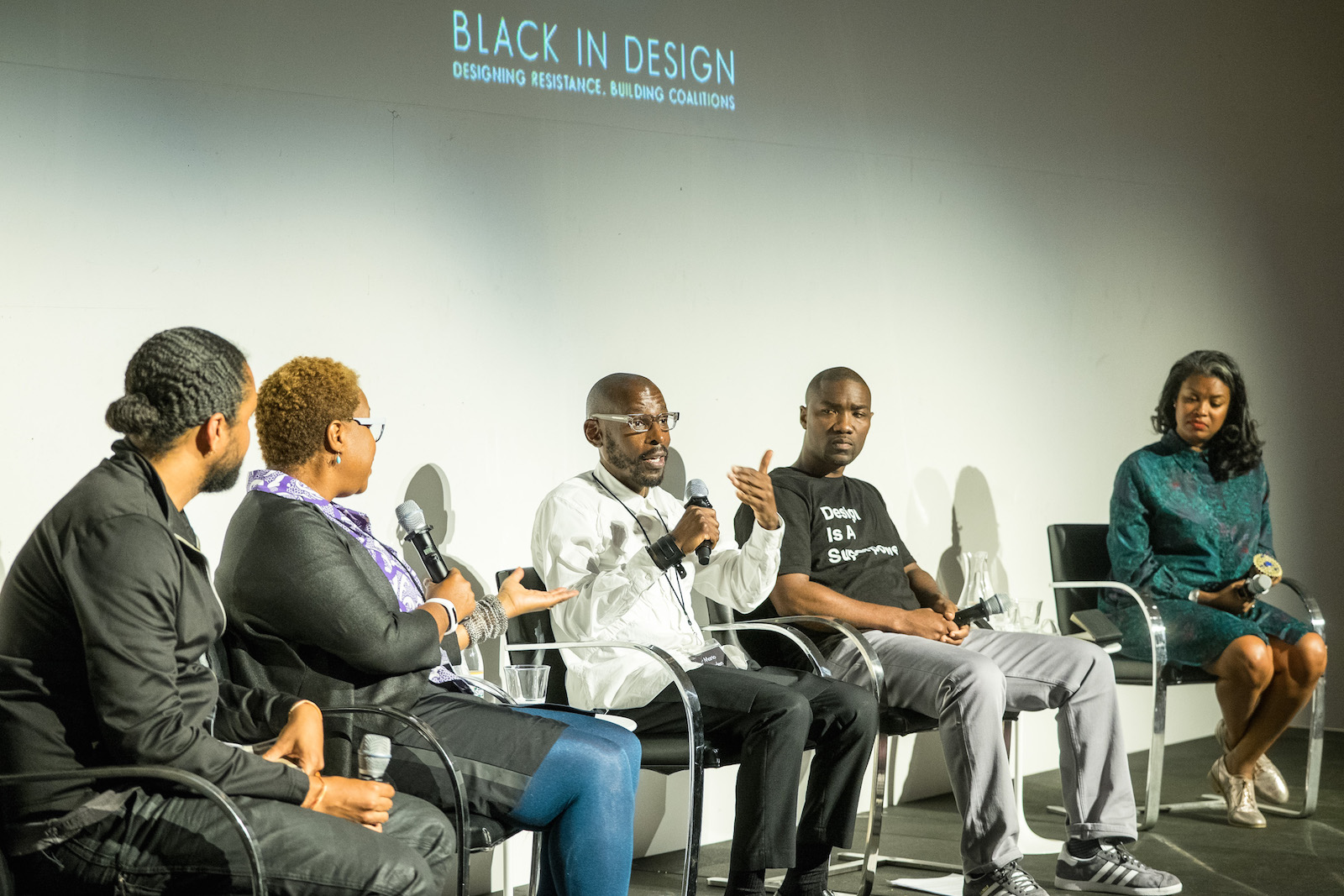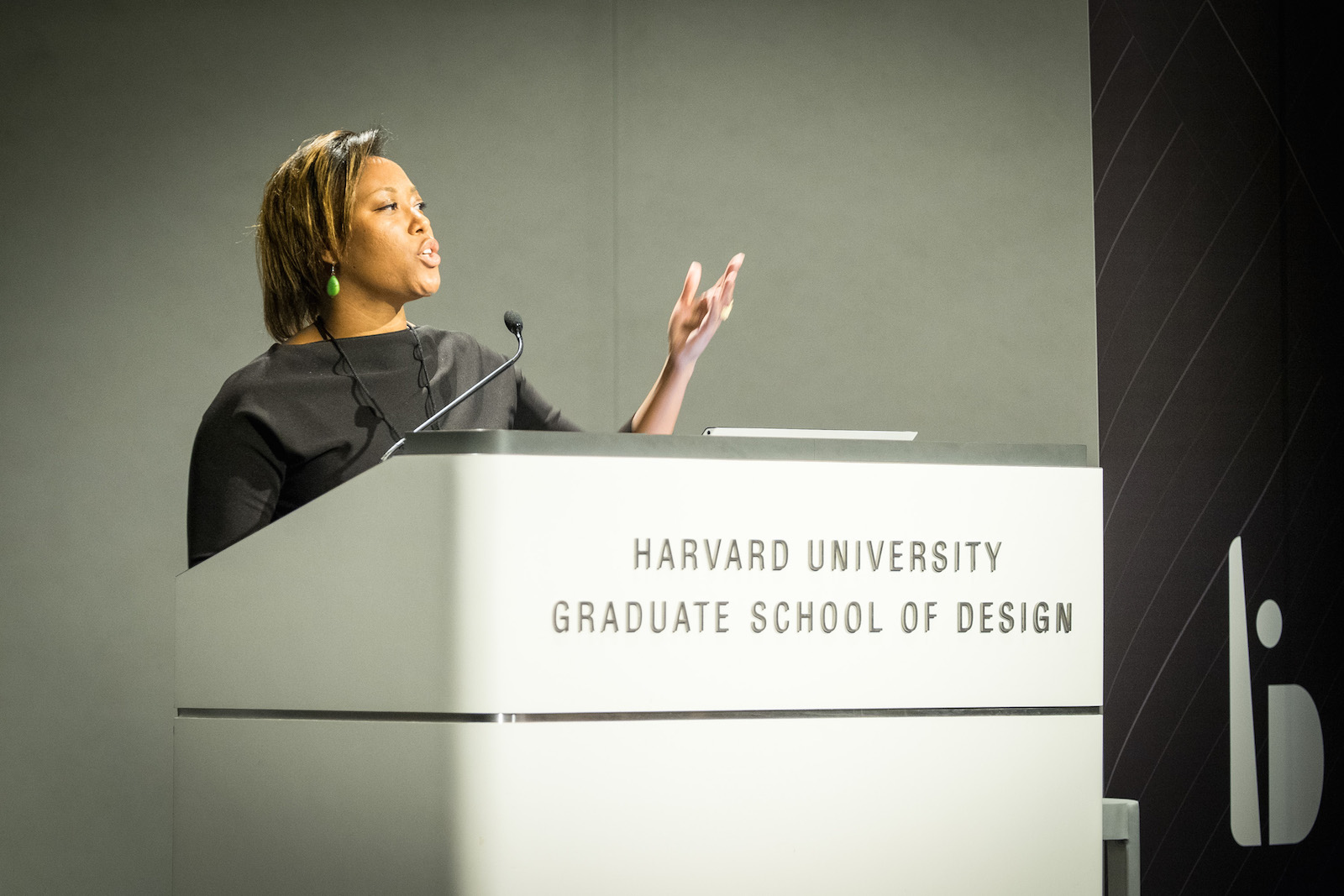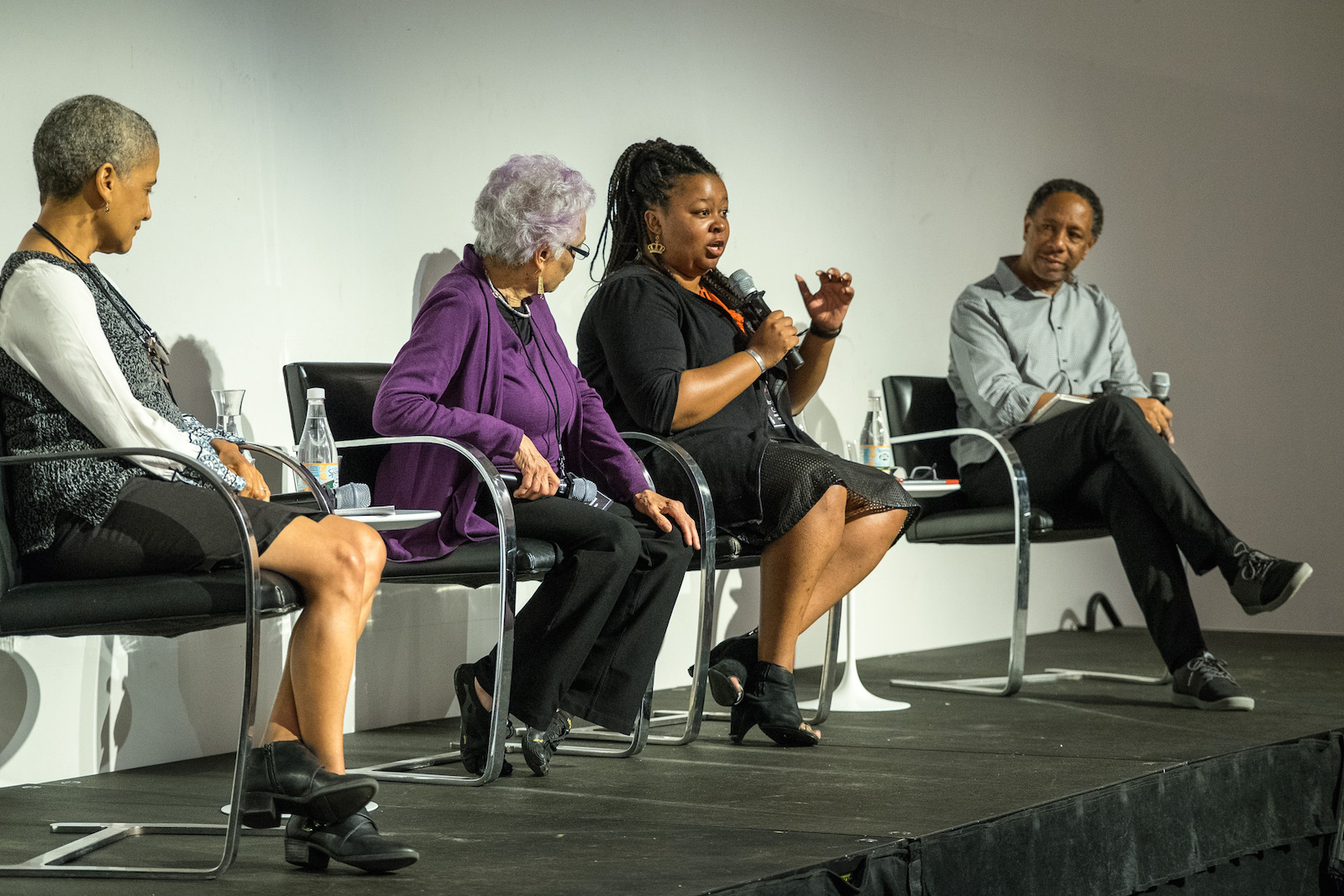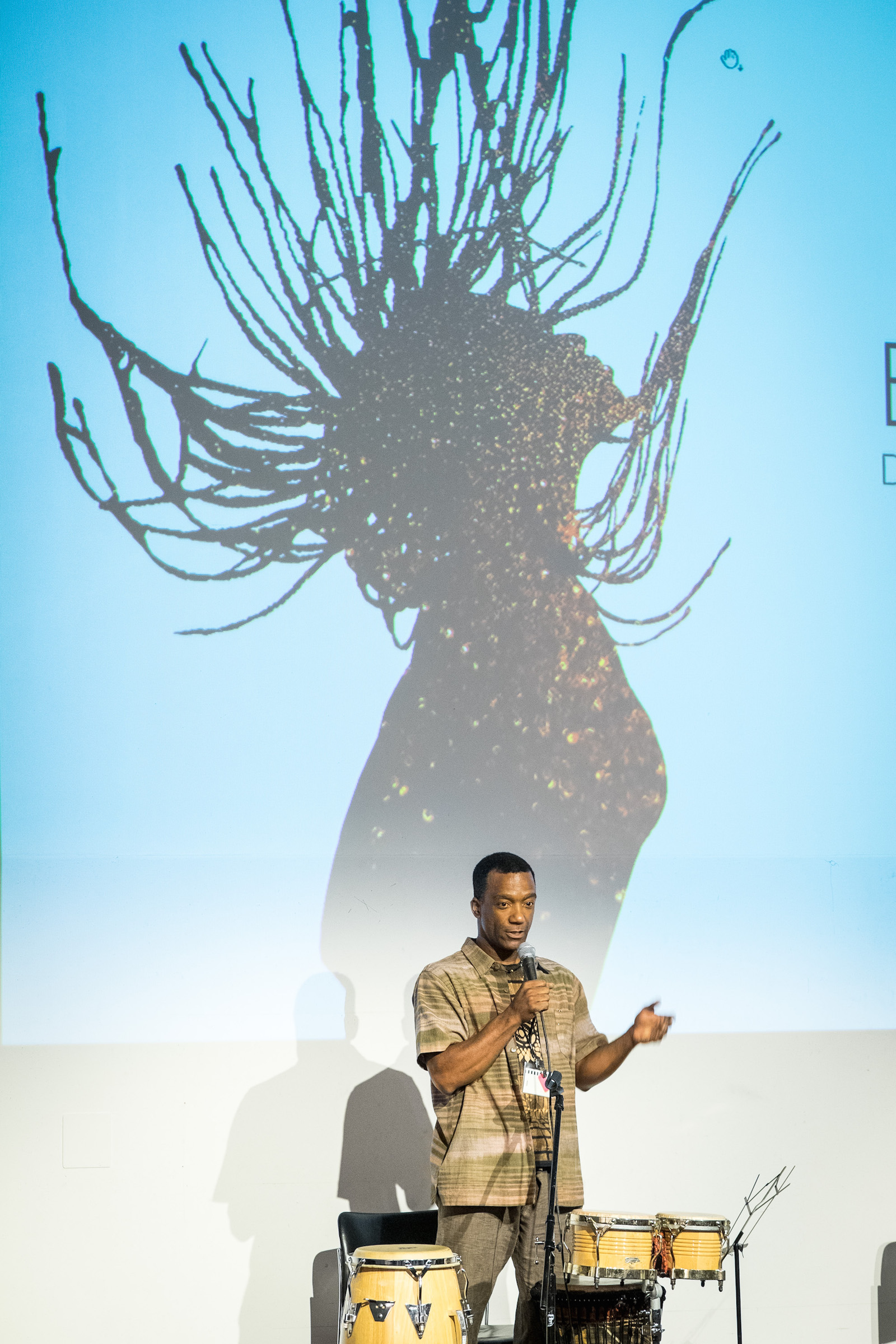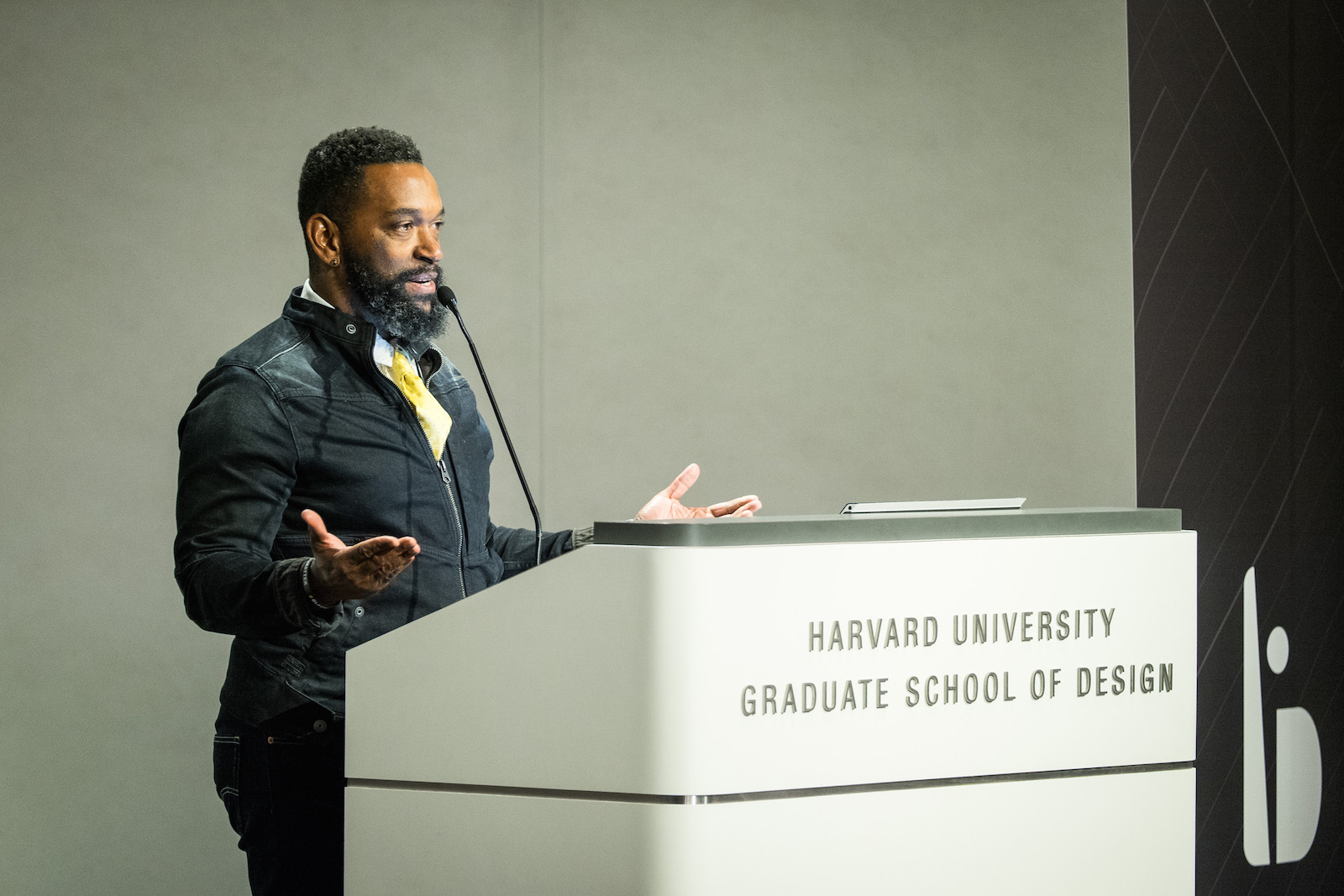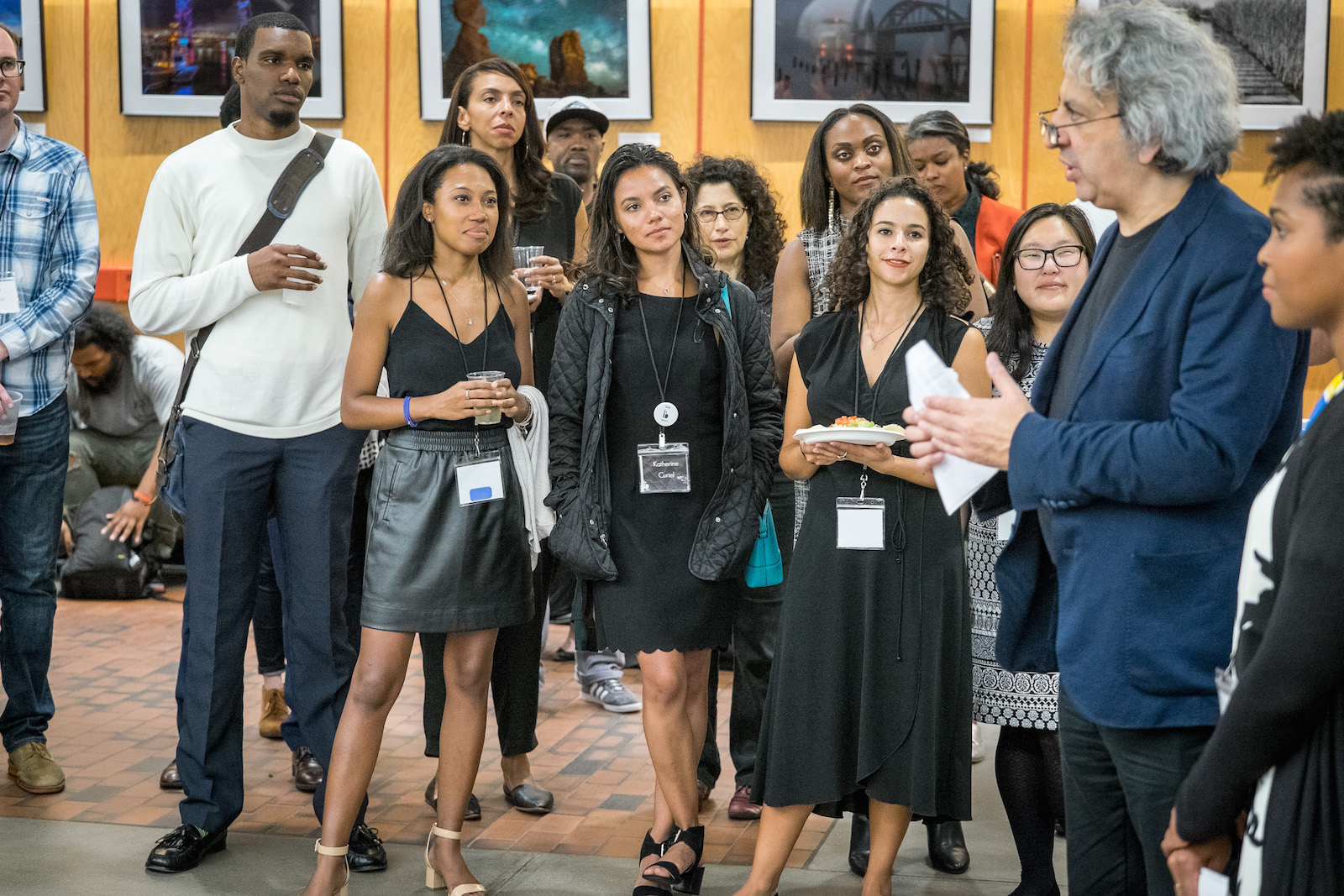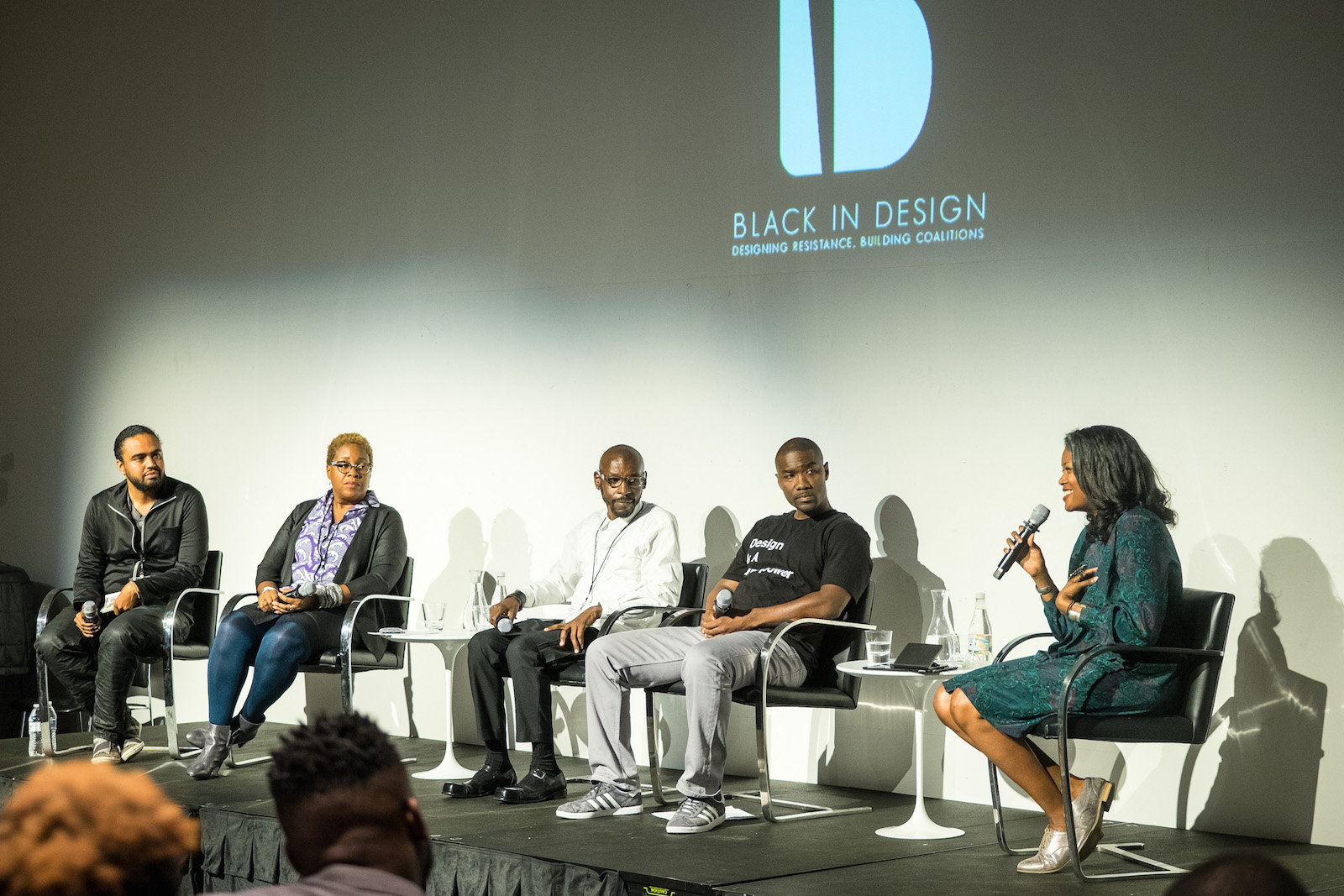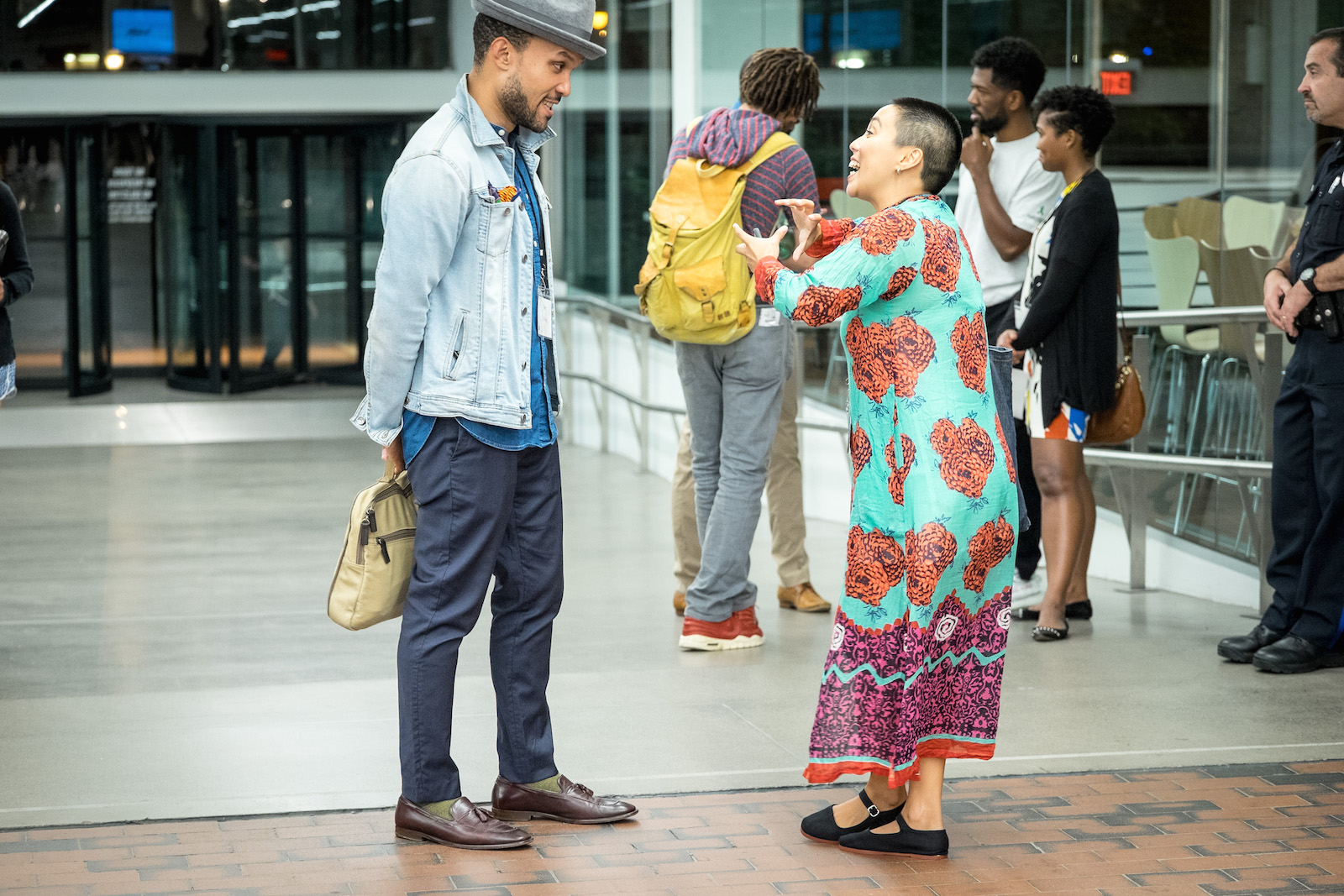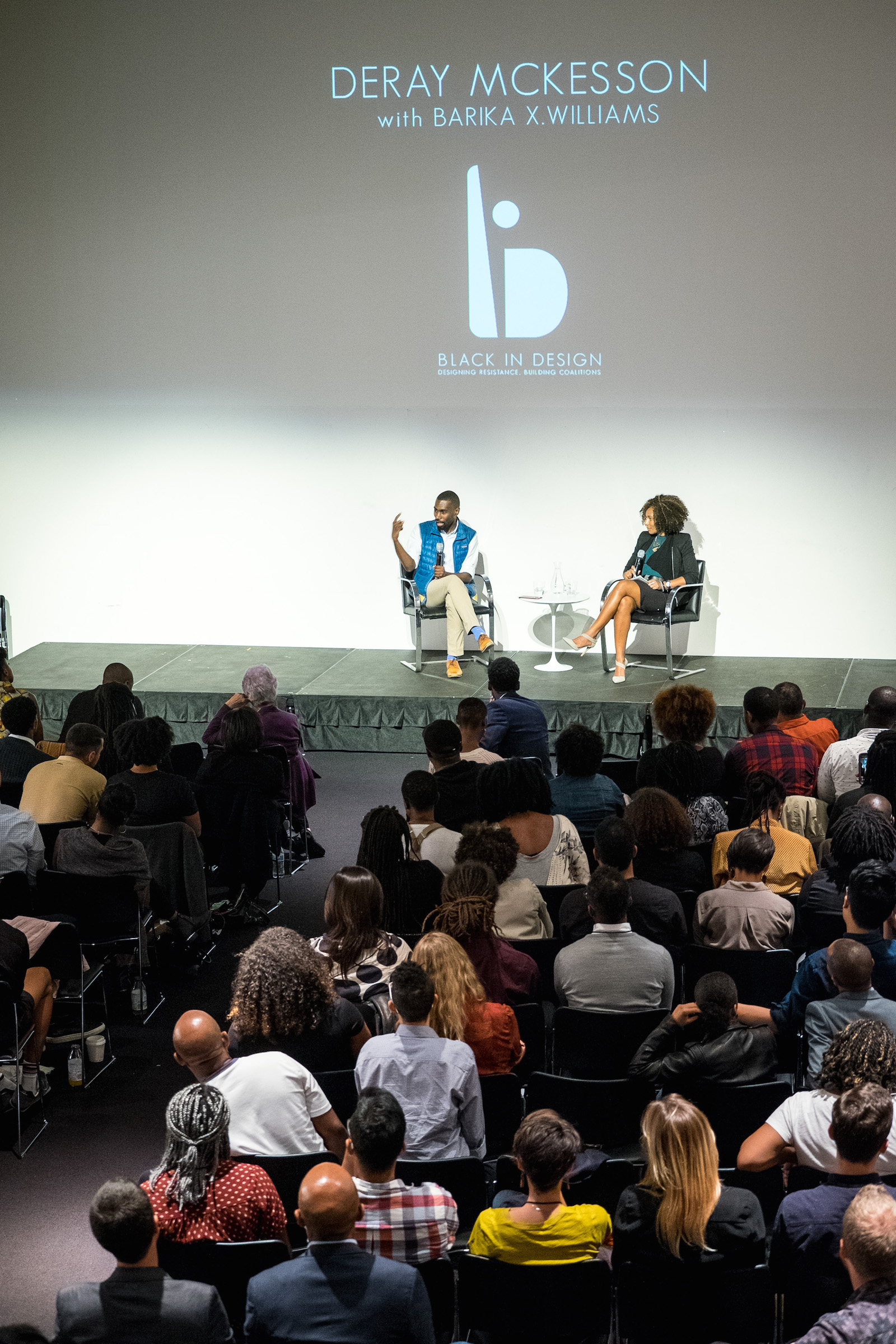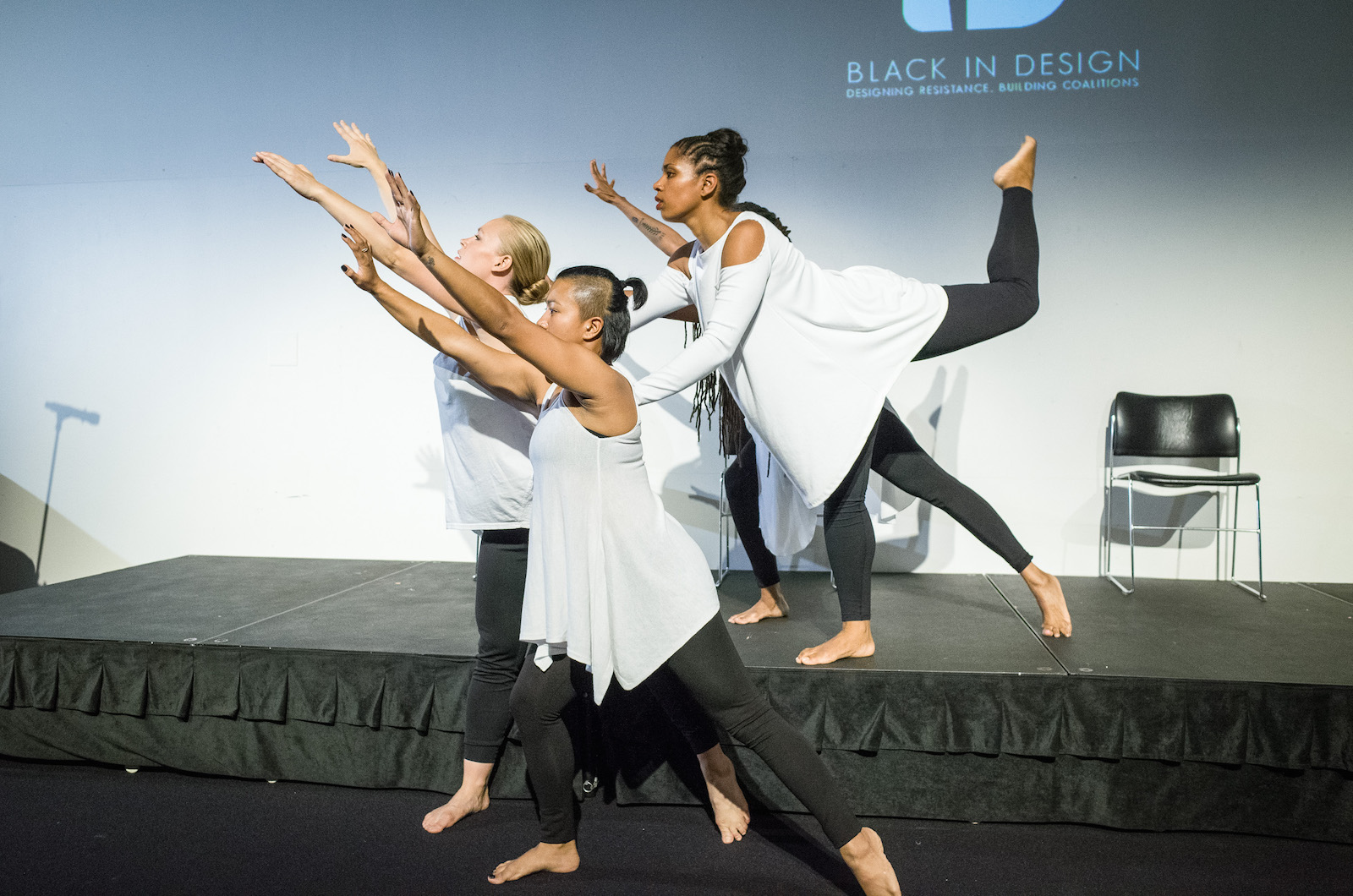Empowering; uplifting; sobering; timely; necessary. An event that evades simple distillation, the Harvard Graduate School of Design’s 2017 Black in Design Conference evoked a range of immediate reactions, as well as a charge for sustained dialogue over the many issues it positioned within its programming.
Organized by the GSD’s African American Student Union (AASU), the 2017 Black in Design Conference was inspired by its inaugural predecessor, held in 2015, but was charged with urgency given the shifts in the nation’s cultural and political climate over the past two years. With a theme of “Designing Resistance, Building Coalitions,” Black in Design 2017 sought to recognize the contributions of the African diaspora to the design fields, as well as to “explore design as resistance and show how designers are advocates and activists”—a mandate relevant to the country’s current political tenor. (View the entire 2017 Black in Design Conference via the GSD’s YouTube channel, where the full conference is available and organized by session, and see a photo gallery of select moments below.)
GSD student leaders from AASU began conceptualizing Black in Design 2017 in fall 2016, spending much of the following months in dialogue over which speakers to invite, which themes to prioritize, and how to scaffold the wealth of ideas and thematic touch points within the context of a three-day conference. Organizers began their planning work in earnest in March 2017.
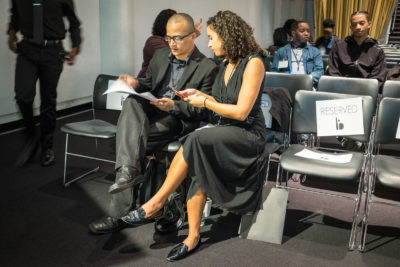
Around that point, conference organizers coalesced as a planning committee, including Natasha Hicks (MUP/MDes ’19), Marcus Mello (MArch/MUP ’18), Amanda Miller (MDes ’17), Armando Sullivan (MUP ’18), and Chanel Williams (MUP ’18). The committee were advised by collaborators including urban planner Justin Garrett Moore, who spoke at the 2015 Black in Design Conference, and 2015 conference co-chair Courtney Sharpe (MUP ’16).
While the 2015 conference proposed scalar themes—starting with discussion of buildings, then moving upward in scale to neighborhoods, cities, and regions—this year’s organizers chose value-driven topics to structuring the conference’s various sessions: Exploring and Visualizing Identities; Communicating Values; Mobilizing and Organizing; and Design Futuring.
These themes were structured to form conversations around topics and skills integral to so-called “design activism,” according to conference organizers. (Design activism refers to the activation of designers’ creative agency toward catalyzing and generating alternatives to normalized ways of living, working, and thinking—or, applying design creativity and strategy toward proposing new ways of living and thinking.)
Powerful keynotes framed the entire conference; LAXArt executive director Hamza Walker opened the conference on Friday evening, October 6, and activist DeRay Mckesson provided closing thoughts at the end of Saturday, October 7. As in 2015, sessions were interwoven with interludes that enriched discourse as much as they entertained audiences; some of this year’s diversions included yoga, dance, and spoken-word performances.
Throughout the conference, the core thematic sessions enabled conversations that delved into given subject matter. Panelists included designers and leaders from across the country—as did the audience. (A number of schools and organizations, including Washington University in St. Louis’s Sam Fox School and Bowie State University, arranged group travel for their respective attendees.)
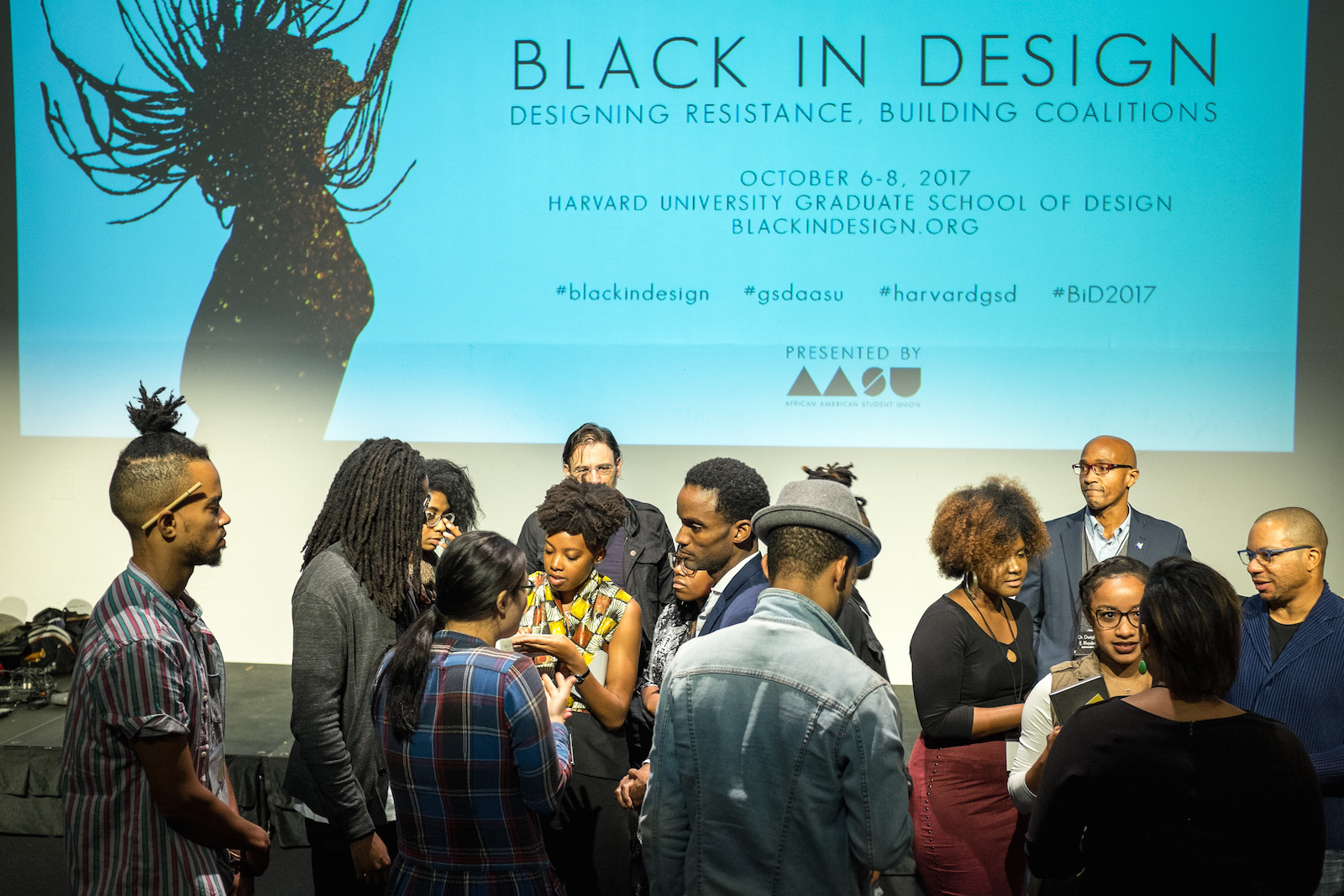
In addition to two noteworthy keynote addresses, a Saturday morning presentation from speaker Courtney D. Cogburn, during the “Exploring and Visualizing Identities” session, struck many conference attendees and organizers as a highlight. Cogburn, whose research focuses broadly on the role of racism in producing racial inequities in health, offered a virtual-reality presentation illustrating day-to-day experiences of an African-American male, and discussed connections among social inequity, the built environment, and health and the body.
Another moment that resonated post-conference: GSD professor Toni L. Griffin’s Sunday morning Just City Lab workshop. Among other activities, Griffin runs the GSD’s Just City Lab, one of the School’s nine such “Design Labs” that synthesize theoretical and applied research and knowledge. Griffin’s Just City Lab addresses some of the themes and questions that Griffin has worked with over the course of her career: how design and planning contribute to the conditions of justice and injustice in cities, neighborhoods, and the public realm. Griffin and the Lab ask: would we design differently if equality, inclusion, and equity were the primary drivers behind design?
During her Sunday presentation, Griffin asked categories of individuals to stand up in the audience.
“I need the black brothers to stand up,” she began.
“I need the women in this room to stand up,” she continued.
“If you are a proud member of the LGBTQ community, I need you to stand up.
“If you are a person who practices a religion that is not Christianity, please stand up.
“If you are a person in this room who lives in this country but was not born in this country, please stand up.”
With nearly the entirety of Piper Auditorium’s audience on their feet, Griffin asked the room to raise their fists, and declared: “You are the people who live in fear in this country every day. You are who the ‘just city’ is for.”
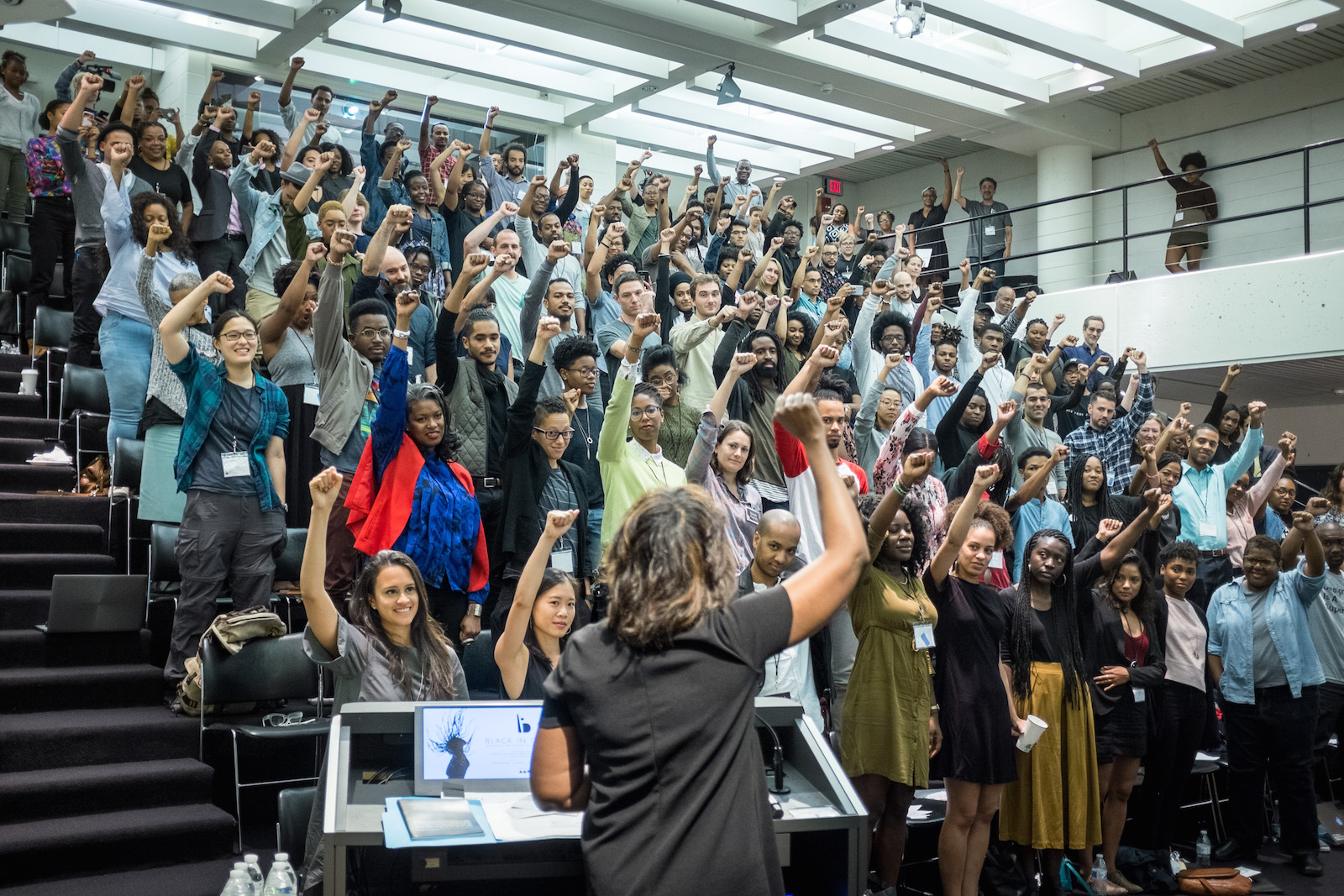
“It is hard to define the emotion in the room while this happened,” Hicks reflects. “I think it was a moment for us all to collectively embrace our fear and also reclaim our agency to do something about it. Toni could not have closed out the program in a more beautiful way.”
In navigating the conference’s ripple effects and forecasting its future, organizers are currently focused on working with the 2017 conference’s immediate momentum and building broad coalitions. As an ongoing feature, the exhibition “Real Talk” was unveiled on Gund Hall’s Experiments Wall, inviting participants to capture and share reflections from the conference and beyond. (An evening event on October 26 with current Loeb Fellow Eric Williams will expand upon the exhibition with a session of “connected storytelling,” inviting participants to each offer a five-minute personal story.)
One hope for organizers is that the conference serves as a jumping-off point for creating coalitions, especially in the communities where conference participants live and work. BlackSpace NYC, which presented during Sunday’s sessions, offers one such example of cross-organizational coalition building; following the conference, a sister organization in Chicago took root.
To look ahead, though, involves a measure of looking back.
“One thing that is so special about Black in Design 2017 is that it did not really begin when we started planning, or even with the 2015 conference,” says Mello. “It started from the generations of black designers who have broken barriers to inspire us to enter these design professions.”
Learn more about the 2017 Black in Design Conference via its website, and learn more about the African American Student Union via the group’s website.
View the entire 2017 Black in Design Conference via the GSD’s YouTube channel, where the full conference is available and organized by session.
